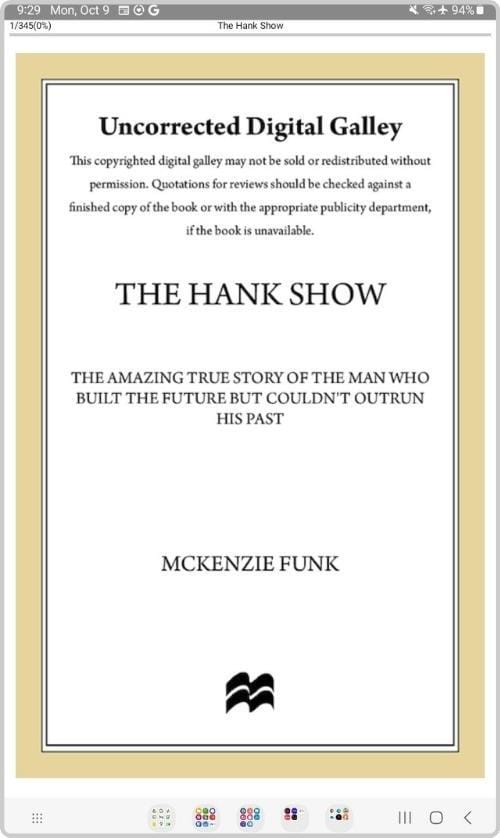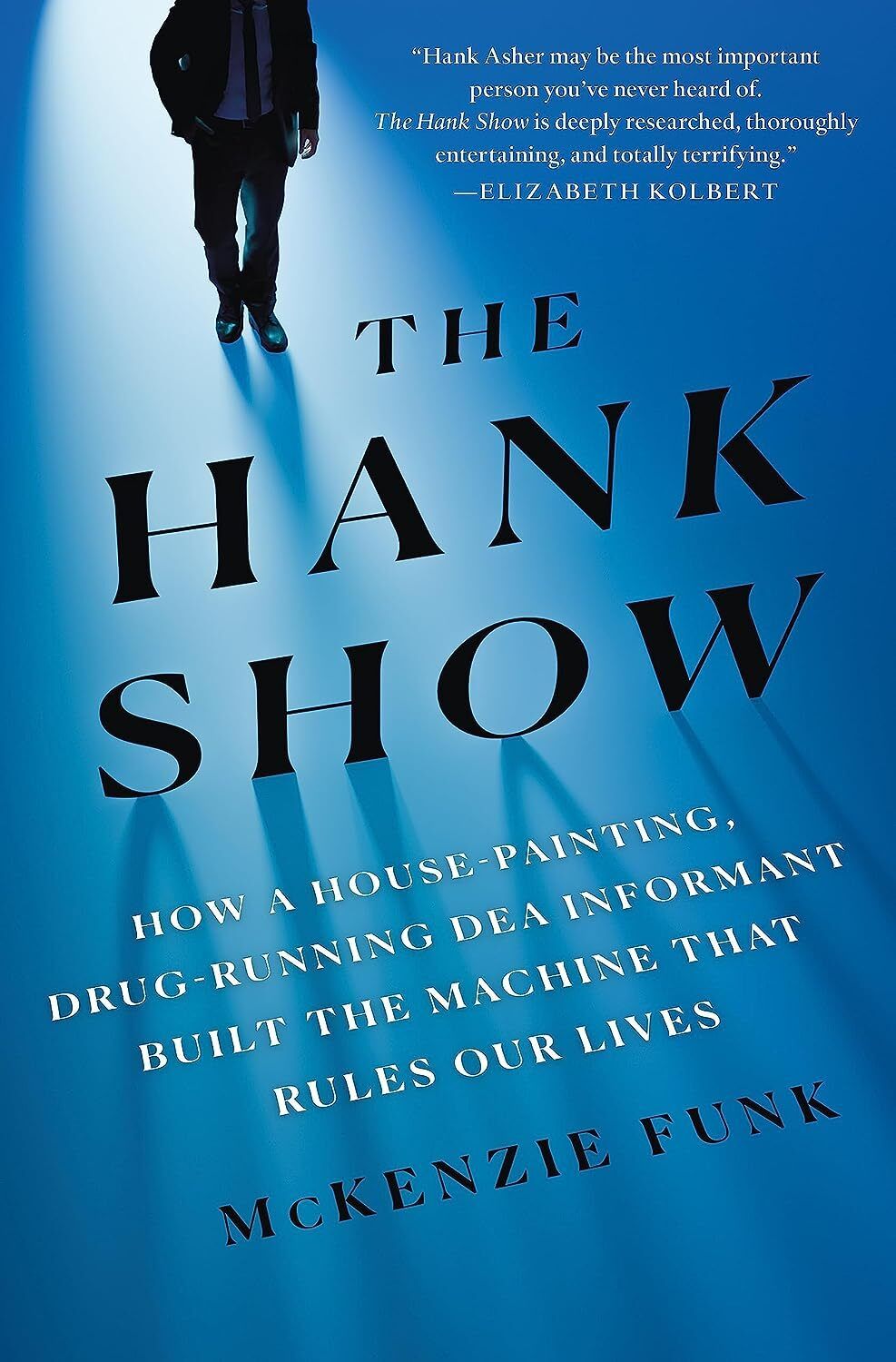
Hank Asher is the most important tech genius you’ve never heard of. That, at least, is what McKenzie Funk would have us believe as he starts his new book The Hank Show. And by the time you finish this captivating book you’ll understand why.
Funk’s nonfiction account reads like a novel. We follow Hank Asher from his early days as a drug runner who then reformed himself into the driven owner of the most successful condo painting company in Florida, only to top that by veering into a new career as a data broker.

The cover of The Hank Show
Hank was in the right place at the right time. It was the late 80s, and personal computers were firmly established and growing more powerful with every passing year. Asher became a self-taught programmer, like so many others at that time. He became proficient in R:Base, one of the earliest relational databases for PCs.
He was in Florida, not Silicon Valley - where his unconventional ideas about computing would probably have seemed crazy and likely would have been discouraged. Out of the mainstream in Florida he was able to develop his genius for pushing both software and hardware forward unhindered. He pioneered some of the earliest and fastest parallel processing machines for databases.
Parallel processing is when you break computing tasks into multiple streams and feed those streams to multiple central processing units (in the case of Asher’s first attempt to multiple PCs networked together). If done right, this can enormously speed up the time it takes to go from question to result. Asher had the knack for doing it right.
When applied to large databases of information, parallel processing can lead to impressive results. So, in 1992 Asher and a partner founded Database Technologies in Pompano Beach, Florida. It was there that Asher first heard about the data broker business. Data brokers take public data and organize it on computers in a way that it can be easily searched. DBT focused early on Florida’s Department of Motor Vehicles records. The resulting product (the algorithms in the software, the data, and the parallel processing machine it ran on) was called AutoTrack and it was an instant hit with law enforcement.
By 1994 DBT had 2 TB of data, a huge amount for the time. They sourced data from multiple public and private entities, including lists of federal liens and bankruptcies, telephone directories, change of address info from the US Postal Service, corporate ownership records and more. In 1997 DBT struck “the motherlode” by obtaining name, address, previous addresses, phone numbers, dates of birth, social security numbers and other “header” information from the big three credit reporting agencies - Equifax, Experian and Transunion.

Author McKenzie Funk
AutoTrack now was one of the largest “people” databases in the US, indeed in the world. And every law enforcement agency, every lender, every insurer suddenly wanted access to their data. Not only their data but their computing power, which thanks to Asher’s genius in parallel processing and his creation of innovative algorithms, was far ahead of DBT’s rivals.
One of the key themes of the book is the paranoia that Asher brought to his work. The former drug runner turned informant was never looked at favorably by the money men who could help turn his ideas into solid businesses. He abused alcohol and drugs, likely self-medicating for his troubled mental state and mercurial personality. As a result, Asher was forced out of DBT after it went public “for the good of the company”.

Hank Asher in 2009
Asher went on to found two more companies, continuing to perfect his ideas and his products in the people data space. In the time between Asher’s leaving DBT in 1999 and his death in 2012, his paranoia, and his tech products, made their way into the national data infrastructure. The stories that follow his time at DBT find him and his “machine” at the heart of the nation’s business - in the controversial Florida 2000 election results, in the hunt for the identities of the 9/11 terrorists and those who might come after them, and in the welfare reforms of the Clinton era. All of these would rely in one way or another on the products that Hank Asher built. And his legacy is still with us, still tracking us all today.
Even if you’ve never heard of him.
RATING: Five Stars ⭐⭐⭐⭐⭐
Rating Comment: Two fantastic nonfiction books in a row - first Eve and now The Hank Show. This is a great book for fans (and critics) of the tech industry, for readers of recent US history, and for lovers of narrative nonfiction.
NOTE: I read an advanced review copy courtesy of NetGalley and the publisher St Martin’s Press. The book was released in hardcover, ebook and audiobook formats on October 3rd, 2023.
Steve's Book Stuff participates in affiliate programs for the booksellers asterisked below. Purchases you make through an affiliate link will return a small commission to me, at no additional cost to you.
Borrow or Buy The Hank Show here:
📙Borrow this book: Find out if your library is lending this book through Libby.
📘 Buy this book: Amazon | Barnes & Noble | Books-A-Million | Powell’s | AbeBooks* | ThriftBooks
📗 Support Indie Bookstores: Buy this book directly from Bookshop.org*.
📚 Visit my Bookshop.org shop to see all my reviewed books.
See What Others Think
Listen to Ari Shapiro interview McKenzie Funk on NPR (8 Min): The story of the drug-running DEA snitch behind the web databases tracking our lives
Kirkus Reviews: A deeply unsettling exposé of an exploitative tech genius
Here the Slate interview with the author (27 Min): The Man Who Turned You Into Data.
Title: The Hank Show: How a House-Painting, Drug-Running DEA Informant Built the Machine That Rules Our Lives
Author: McKenzie Funk
Publisher: St Martin’s Press (an imprint of MacMillon)
Publish Date: October 3, 2023
ISBN-13: 9781250209276 (US hardcover)
Publisher’s List Price: $30.00 (US hardcover)